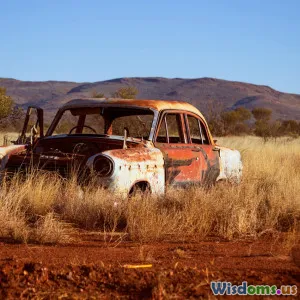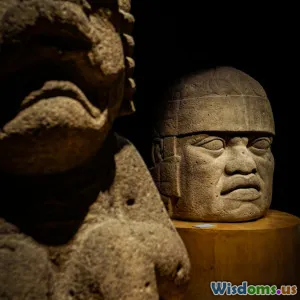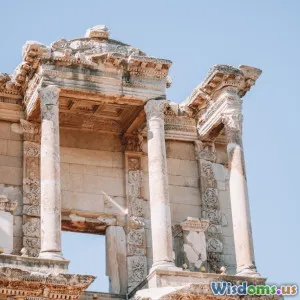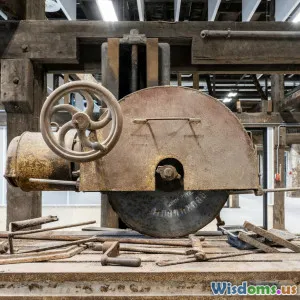
Unearthing the Lost City of Cahokia What Archaeologists Are Finding Now
7 min read Explore Cahokia's archaeological secrets as modern research uncovers insights into North America's largest ancient city. (0 Reviews)
Unearthing the Lost City of Cahokia: What Archaeologists Are Finding Now
Introduction
Deep in the heart of the American Midwest lies one of the most enigmatic archaeological sites in North America—Cahokia. Once a sprawling metropolis before European contact, Cahokia was the epicenter of an advanced Native American civilization that built monumental earthworks and played a pivotal role in pre-Columbian history. Rediscovered through meticulous archaeological work, Cahokia continues to captivate scholars and the public alike. What secrets are modern archaeologists revealing about this lost city? This article unpacks recent discoveries shedding new light on Cahokia's social structure, engineering prowess, and cultural significance.
The Rise and Fall of Cahokia: A Brief Overview
Cahokia flourished between approximately 1050 and 1350 CE, at the confluence of the Mississippi, Missouri, and Illinois Rivers near present-day St. Louis. At its peak, Cahokia was home to an estimated 10,000–20,000 inhabitants, making it the largest urban settlement north of Mexico during its time.
The city is renowned for its massive earthen mounds, including Monks Mound—North America’s largest prehistoric earthwork, rising nearly 100 feet tall. These structures were not just architectural feats but also held religious and political significance, reflecting Cahokia's complex societal hierarchy.
Despite its grandeur, the city mysteriously declined and was abandoned by the 14th century. Archaeologists continue to debate the causes: environmental changes, resource depletion, social upheaval, or a combination of factors.
Recent Archaeological Endeavors at Cahokia
Advanced Technology Unveils Hidden Features
Today’s archaeologists employ state-of-the-art technologies like LiDAR (Light Detection and Ranging) scanning, ground-penetrating radar, and drone imaging to map Cahokia’s extensive landscape beyond visible mounds. LiDAR, for instance, has revealed previously undocumented features such as smaller ceremonial platforms, residential zones, and complex road networks ranging over 50 square kilometers.
Multiple studies published in journals such as American Antiquity have highlighted the delicate urban planning that guided Cahokia’s construction, indicating a cityscape organized by social stratification and cosmological beliefs.
Insights into Cahokia’s Social Dynamics
Recent digs suggest Cahokia was more than a ceremonial center; it was a vibrant urban hub with diverse neighborhoods. Excavations uncover distinct artifact assemblages—pottery styles, tools, and trade goods—that highlight a multicultural populace linked to broad trade networks extending to the Gulf Coast and Great Lakes.
Dr. Timothy Pauketat, a leading Cahokia archaeologist, emphasizes that the settlement can best be described as a "centralized religious and social authority, drawing people from afar for ritual gatherings and economic exchange." His work illustrates how political power was centralized yet fluid, negotiated through impressive displays like the St. Louis Woodhenge—a solar calendar constructed from upright cedar posts.
Ecological and Environmental Research
New paleoenvironmental studies analyze soil samples and tree rings to reconstruct the ancient environment surrounding Cahokia. These reveal that rapid deforestation and landscape modification occurred to support agriculture and mound-building, likely leading to soil erosion and resource scarcity.
Understanding how the Mississippian people interacted with their environment provides clues to Cahokia’s sudden decline. For instance, prolonged drought periods identified through dendrochronology likely stressed agricultural productivity, reducing food surpluses needed for sustaining such a large population.
The Spiritual and Cultural Fabric
Archaeologists are also decoding Cahokia’s spiritual life by examining burial practices and mound alignments. The discovery of complex burial rituals with grave goods indicates social stratification and perhaps elite status. Items like engraved shell gorgets, copper artifacts, and mica mirror pieces underscore Cahokia’s participation in the Southeastern Ceremonial Complex—a widespread religious network among indigenous cultures.
Excavations of the Woodhenge site demonstrate an advanced understanding of astronomy, coordinating rituals with solstices, which suggests Cahokia’s spiritual significance as intertwined with celestial events.
Challenges and Preservation Efforts
Despite its significance, Cahokia faces threats from urban development, agriculture, and environmental changes. Continuous archaeological efforts aim to protect the site through public education and by integrating indigenous perspectives in preservation strategies.
The Cahokia Mounds State Historic Site now functions as a UNESCO World Heritage Site, attracting scholars, tourists, and Native American communities invested in reclaiming and honoring their ancestral heritage.
Conclusion
Cahokia stands as a testament to the ingenuity and complexity of indigenous North American civilizations. Modern archaeological techniques are peeling back layers of time to reveal a city far more sophisticated than once believed.
From monumental earthen mounds and nuanced social structures to environmental adaptation and spiritual depth, Cahokia offers profound insights into pre-Columbian history. As ongoing research progresses, each new finding enriches our understanding not only of Cahokia but also of the rich cultural legacy that continues to shape indigenous identity across North America.
The story of Cahokia reminds us of the impermanence of civilizations and the enduring power of archaeology to bring lost worlds back to life.
Rate the Post
User Reviews
Popular Posts





















